“We provided a supercomputer cluster in Dubna to fight against COVID”
Interview, 13 April 2021
RAS Academician Grigory Trubnikov spoke about fighting coronavirus with nuclear physics, new technologies to destroy cancer tumors and production of chemical elements
Interview by Anna Urmantseva, Izvestia, 13 April 2021
According to Director of JINR, RAS Academician Grigory Trubnikov in an interview with Izvestia the supercomputer capacity of the Joint Institute for Nuclear Research has been provided to the World Health Organization. JINR specialists have also created track membranes (special filters) for means of protection from coronavirus in red zones of hospitals. In addition, Grigory Trubnikov spoke about work on the creation of elements 119 and 120 of the Mendeleev’s table, explained what the new proton centre in Dubna is needed for, how the deep underwater neutrino telescope on Baikal will work and what the NICA superconducting collider will be like.
– Grigory Vladimirovich, how has the work of JINR changed during the pandemic?
– First of all, we cooperate with the Ministries of Health of the JINR Member States and the World Health Organization. We have provided WHO with data storage and processing capacity, having become a part of a global distributed system into which countries put information about COVID-19. The system is also involved in modelling the spread of the virus. This is a global task which requires large computer resources.
– How else is the Institute involved in humanity’s fight against the coronavirus?
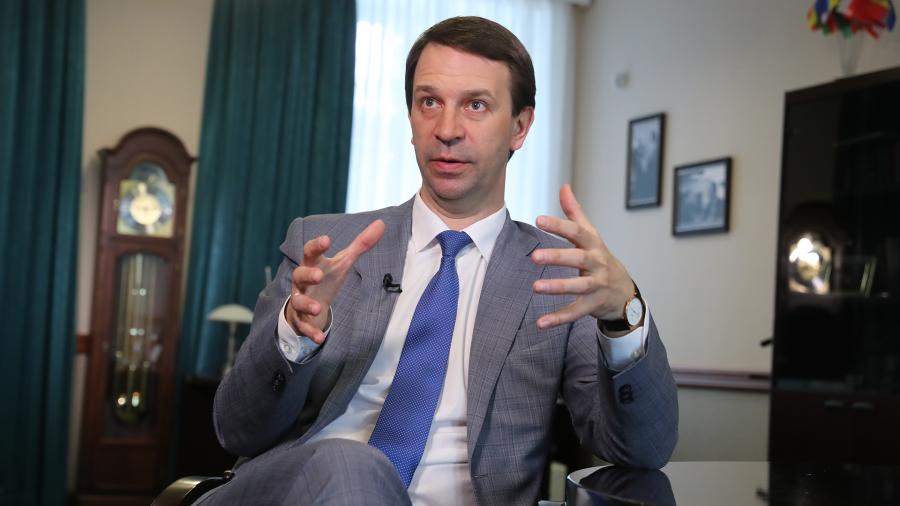 Grigory Trubnikov. Photo: IZVESTIA/Andrey Ershtrem
Grigory Trubnikov. Photo: IZVESTIA/Andrey Ershtrem
– Back in March 2020, we developed the technology of specialised track membranes for protective equipment of the medical staff. JINR scientists experimentally selected beam energy and nuclei varieties with which the membranes can be made: this is a polymeric membrane with a pore diameter of about 100 nanometres. The membrane, after being processed in a solution that kills the virus, can be used repeatedly.
– Is it comfortable to breathe through this kind of membrane?
– Of course it is. In addition, the filters can be used for test systems. As you can see, we also do practical research. For example, we can select such a polymer radiation mode that the pores in the membrane can work according to the capillary effect (absorbing liquid into narrow containers due to the surface tension. – “Izvestia”). The virus gets absorbed into the pores, but the rest does not.
– Do you help to develop or test vaccines?
– Yes, this is also a priority. For example, using a neutron beam, the characteristics of the penetrating and/or protective ability of human cells are determined: whether they resist the virus, which pharmaceuticals are necessary as the most effective vehicle for vaccine delivery. Such studies of the coronavirus and one of the vaccines resulted in an article published in Nature in 2020.
– You have recently returned from the launch of the neutrino telescope, which has been operating on the bottom of Lake Baikal. How huge is it?
– The telescope has a volume of 0.5 cubic kilometres. It is a crystal lattice with optical modules in the knots placed in water to a depth of 700 metres. Imagine, the entire Moscow City building complex was lowered to the bottom of Lake Baikal – it is comparable in volume. The working substance of the detector is the purest Baikal water with a stable temperature of about +3.5 °C – an ideal environment without any refraction or scattering. The telescope investigates flashes of light from the interaction of high-energy neutrinos with water molecules.
The telescope’s two thousand “eyes” are optical modules with sophisticated electronics and photomultipliers. More than 200 more “eyes” are about to be added. We will get the largest neutrino telescope in the Northern Hemisphere. Modules are assembled at JINR, within 10 months the electronics are assembled, certified, tested for high pressure and corrosion resistance, for the effects of extreme external factors. “Eyes” should work smoothly for decades.
– The neutrino is an ultralight particle that barely interacts with matter. But through the study of these particles, you can understand how the universe lives. Are you determined to catch exactly those particles that fly from the bottom of Baikal?
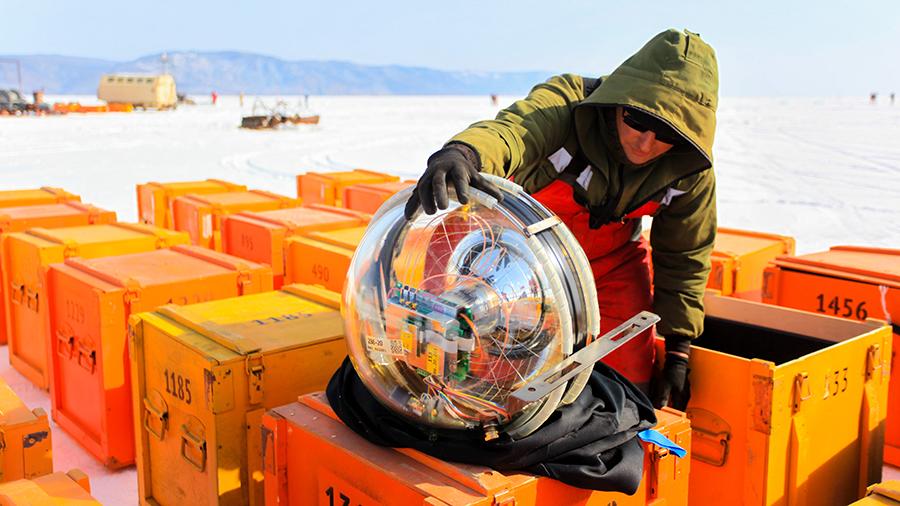 Preparing to launch the Baikal-GVD deep-underwater neutrino telescope at Lake Baikal. Photo: RIA Novosti / Kirill Shipitsin
Preparing to launch the Baikal-GVD deep-underwater neutrino telescope at Lake Baikal. Photo: RIA Novosti / Kirill Shipitsin
– That is right. Flows of charged particles fly in from the South Pole, and only the most high-energy and weakly interacting particles reach the opposite side of the Earth (around Baikal) in diameter. The Earth is like a powerful wall of biological protection from radiation. The particles of most interest to us were born billions of years ago in the nuclei of galaxies, in supernova explosions, and in the merging of black holes. They are extremely difficult to detect: it is necessary to sort huge amounts of data.
– Our body is known to be penetrated by cosmic particles every second. And there are many of them. How to find neutrinos among them?
– About 50 thousand neutrinos from space pass through 1 square centimeter of skin every second. We do not feel these particles. However, physicists have learned to detect them quite accurately. But neutrinos are also different – they can be born in space, in the atmosphere and in the Earth stratum. The detector catches everything: we are talking about “four-pi geometry”. The task of the collection systems, data analysis, and the experimenter is to detect just the particle that has superhigh energy. There are only a few such discoveries a year.
– So the detector’s output is a few neutrinos a year?
– But what a great one! Such a particle pierced the Earth and, without interacting with anything, flew out near Baikal. And we found it! It’s the one that carries information about everything it “saw” along the way.
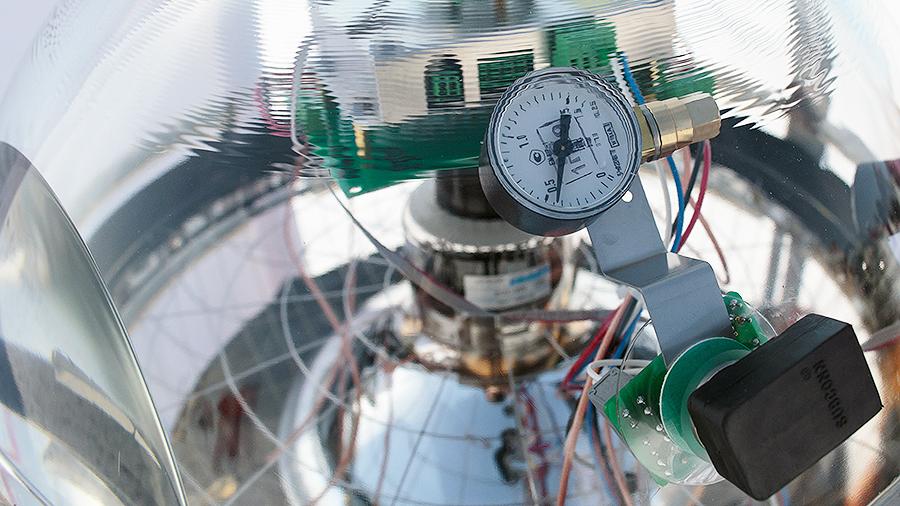 Optical module of the Baikal-GVD telescope. Photo: TASS/Alexey Kushnirenko
Optical module of the Baikal-GVD telescope. Photo: TASS/Alexey Kushnirenko
– So how is this information recorded?
– A single particle may not say anything, but by collecting statistics and comparing it with data from astronomers and astrophysicists, one can judge a lot about the Universe. The measured characteristics of particles tell us about it: their energies and types, direction of arrival, interaction cross sections.
– And can this be 100% proven, or can it still be confused with algae from the bottom of Baikal?
– It is definitely possible to filter it out. However, if the flight time of the particle was several billions of years, then on this scale it is possible to mistake the “birth address” by several hundreds of thousands of light years.
– What does this new knowledge of neutrinos provide?
– We will learn more about the nature of phenomena in the Universe, we will be able to describe exotic cosmic objects more accurately, and will learn to predict the development of the Solar System and our Galaxy.
– Suppose a scientist discovers the long-awaited “right” neutrino. What do they do next?
– The sought event is a big celebration. But before it can be claimed, the data is verified. There are now giant databases of signals from known sources (industrial noise, energy and seismic frequencies, calibrated signals from space objects, and more). First, the coincidences with this base are sorted out, then reliable statistics are achieved – the amplitude of the useful signal should be at least five times greater than the measured background.
– So every neutrino has to be defended like a thesis?
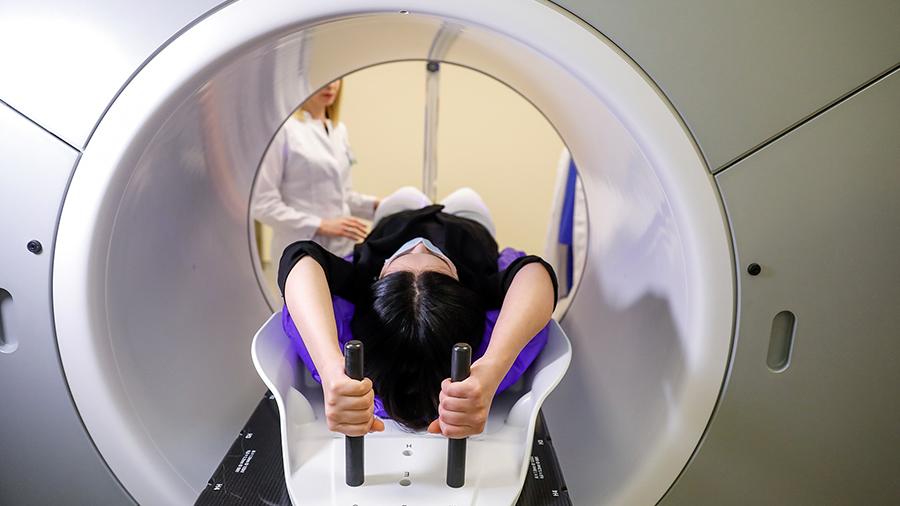 Photo: TASS/Mikhail Japaridze
Photo: TASS/Mikhail Japaridze
– Every suspicious (in a good sense) event should be protected. Theorists, experimentalists, electronic and computer scientists, data scientists gather and try to contradict the speaker’s thesis. After proving it, if they are sure, they decide whether to publish the results.
– If the mega-science facilities currently constructed in Russia are considered, which one is the most interesting to you?
– The NICA collider is not only interesting but also the most ambitious one. The project is due to “breathe” in two years. The first physics will be on its way. Today thousands of people are working on the construction of the collider in Dubna, hundreds of companies from around the world, about 30 countries are involved both in manufacturing equipment and modeling, preparing experiments: I think in Russia, there has not been such a thing since the late 1970s. The level of technology in the project is 5-10 years ahead of what is industrially available. Everything is at the cutting edge of progress: the project must be a technological record not at the design and construction stage, but at the moment of launch.
– And will it be?
– Undoubtedly.
– Some time ago, you said that an innovative proton centre would be opened at JINR. Is this true?
– Yes, we are creating a unique cyclotron for a new-generation proton therapy centre. The tasks are to work on technologies and modern protocols for the treatment of non-operable cancer patients, as well as radiobiological research into the mechanisms of aging. We want to launch such a machine in three years and demonstrate high-temperature superconductivity, energy efficiency, record doses, and brand-new technologies for irradiation of biological tissues.
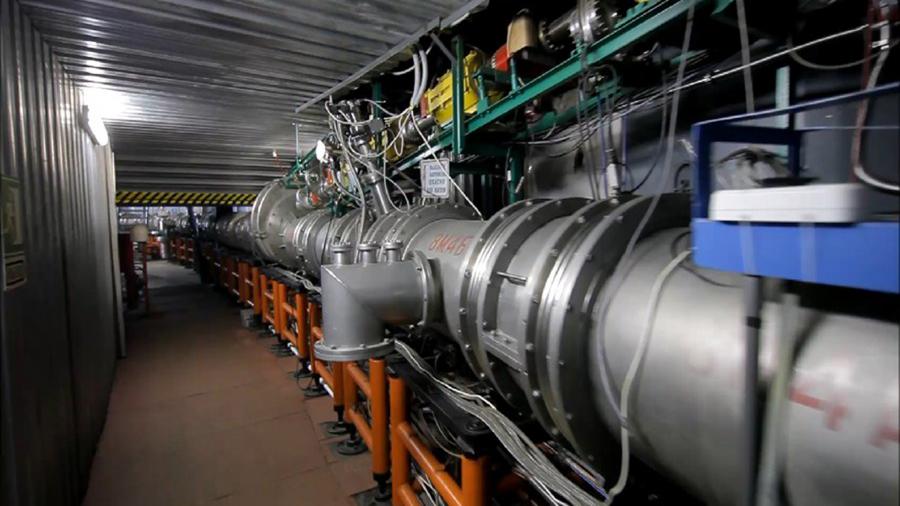 NICA Collider. Photo: NICA Megaproject/nica.jinr.ru
NICA Collider. Photo: NICA Megaproject/nica.jinr.ru
– Will the proton centre be here, on the Institute’s territory?
– We want to make a prototype centre (accelerator and radiobiological beamlines) here. Then, in partnership with a medical organization, to create a full-fledge proton therapy centre operating at the hospital.
– How will it be different from the others?
– First of all, by the use of superconductivity. NICA is a completely superconducting complex, it would be nonsense not to use our expertise in cryogenics and superconductivity for applied tasks. Proton therapy is a big science. Charged beam particles, when irradiated, create single- and double-stranded DNA breaks in tumour cells, which then die. A person with a non-operable tumour is exposed to a large dose load on healthy tissue. The breakthrough in technology lies with those who will create a tool and technique to remove the tumour in a minimum number of radiation sessions with a minimum radiation dose.
– Will these be new beams?
– Yes, beams with new characteristics.
– Your Institute is known all over the world, first of all because new chemical elements are discovered at JINR. That is why the Mendeleev’s table already has dubnium and moscovium, there is flerovium and also oganesson – the heaviest element in the table, element 118, named after the now living outstanding scientist of your Institute Yuri Oganessian. When will the new chemical element be introduced?
– When should it be? This is a study of nature, and it’s hard to accustom it to plans and schedules. Of course, we want to be the first in this, too. We shall wait and see, let’s dream of 2022 or 2023.
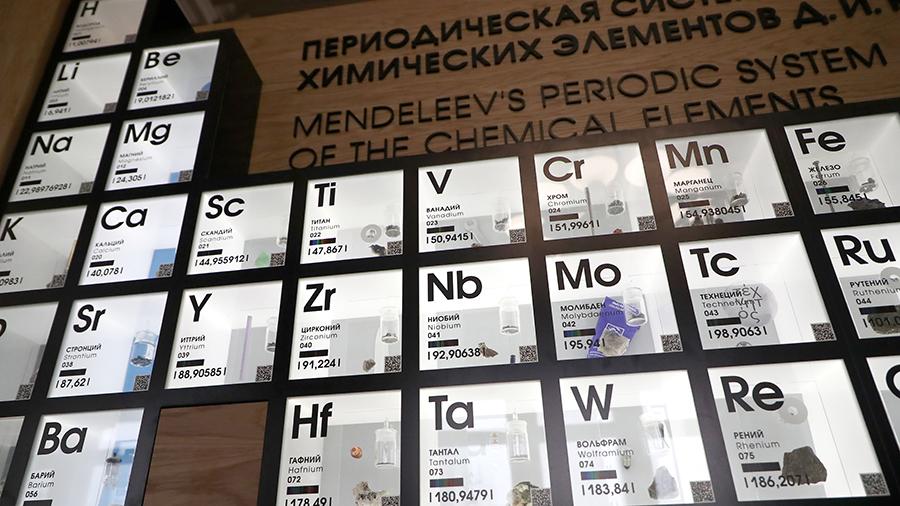 Photo: TASS/Anton Novodezhkin
Photo: TASS/Anton Novodezhkin
– In order to expand the Periodic Table, you have created the so-called Superheavy Element Factory. Does it operate?
-Yes, it does! We have been testing it for a year. In January, we put it to work in a cruising experiment. At the end of the year, I think we will be accelerating a new beam with titanium or chromium ions. Highly neutron-excessive (very rich in neutrons) nuclei and very heavy targets (of superheavy elements) are necessary. We expect the combination of these beams of ions and heavy radioactive targets to produce reaction cross sections to achieve elements 119 and 120.
Source: Izvestia 13 April 2021